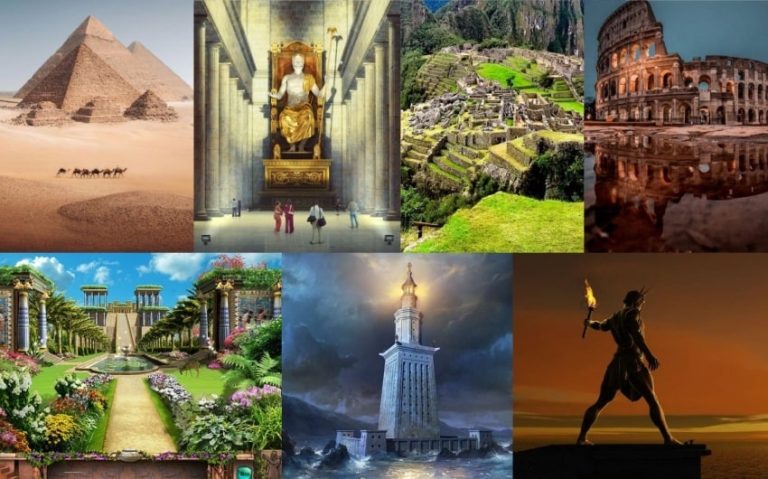Why Was the Eiffel Tower Built? The Story Behind Paris’s Icon
The Eiffel Tower stands as one of the world’s most recognizable landmarks, capturing imaginations with its unique iron lattice structure and towering height. But many wonder, why was the Eiffel Tower built in the first place? Originally constructed over a century ago, the tower was meant to celebrate French innovation and engineering for a global audience. While initially controversial, it soon captured hearts and became a symbol of Paris itself.
Today, the Eiffel Tower isn’t just an architectural marvel; it’s an icon with a story as captivating as its structure, drawing millions of visitors from around the world.
The Vision Behind the Eiffel Tower
The idea for the Eiffel Tower originated as part of France’s ambitious plans for the 1889 Exposition Universelle, or World’s Fair, which was to celebrate the 100th anniversary of the French Revolution. Organizers wanted an awe-inspiring structure that would reflect the nation’s engineering prowess and forward-thinking spirit.
Out of over a hundred design submissions, the proposal from Gustave Eiffel’s engineering company stood out for its innovation and scale. The tower was intended to showcase a new era of architectural possibility and to solidify France’s place as a leader in modern engineering.
Gustave Eiffel, an accomplished engineer known for his work on bridges, saw this project as an opportunity to push the boundaries of iron construction. Although Eiffel was initially met with skepticism and opposition, he was passionate about the tower’s potential to inspire and advance the field of civil engineering.
His vision was more than a towering structure; it was a symbol of progress and human ingenuity, a towering testament to what could be achieved through vision, perseverance, and cutting-edge technology. For Eiffel, the tower was an experiment in structural engineering and an emblem of French pride.

Purpose of the Eiffel Tower
The Eiffel Tower served a dual purpose: it was both a striking centerpiece for the 1889 World’s Fair and a testament to France’s technical advancement. Standing at a record-breaking 300 meters (984 feet), the tower was designed to be the tallest man-made structure in the world—a title it held for over 40 years.
This incredible height was not only meant to captivate fairgoers but to demonstrate the potential of iron as a building material, which was innovative and relatively new at the time. The tower’s lattice design showcased the strength of iron in supporting great weight and height without being overly massive or bulky.
As a symbol of modern engineering, the Eiffel Tower also represented France’s desire to lead the world into a new era of industrial and architectural achievements. It stood as a challenge to the older, more conservative styles of construction, making a bold statement about the importance of embracing new materials and methods.
Additionally, Eiffel intended for the structure to serve scientific purposes; he later conducted various experiments on it, such as wind resistance studies and early radio transmissions, further reinforcing its status as a platform for advancement.
Initial Public Reaction and Controversy
When the Eiffel Tower’s design was first revealed to the public, it stirred intense controversy among Parisians, particularly artists and intellectuals. Many considered the iron structure an eyesore, calling it a “monstrosity” and a “tragic street lamp.” Critics argued that it clashed with the architectural elegance of Paris and worried that its towering presence would ruin the city’s skyline.
A prominent group of artists and writers, including Alexandre Dumas and Guy de Maupassant, even signed a petition urging the city to halt its construction. The backlash was so fierce that for a time, the tower’s future seemed uncertain.
However, as construction progressed and the tower began to take shape, public opinion slowly started to shift. Many people were drawn to its unique appearance and monumental scale, and its completion at the World’s Fair brought millions of visitors who marveled at the achievement.
Despite the initial uproar, the Eiffel Tower soon became a point of fascination and pride, as more people recognized it as a symbol of modernity and French innovation. Over time, what had once been deemed an “iron monstrosity” transformed into one of the most beloved landmarks in the world, defying its critics and becoming an icon of Paris.
The Eiffel Tower’s Planned Demolition
Remarkably, the Eiffel Tower was initially intended to be a temporary structure, built to stand for only 20 years after the 1889 World’s Fair. The tower’s construction contract included a clause requiring Gustave Eiffel to dismantle it by 1909, much to the relief of some of its early critics.
However, Eiffel was determined to extend its lifespan, recognizing the potential of the structure beyond just its architectural appeal. He understood that the tower’s usefulness could go beyond symbolism, particularly in the emerging fields of science and communication.
Eiffel’s commitment to scientific advancement ultimately saved the tower. He offered the structure as a platform for conducting experiments, using it to study meteorology, aerodynamics, and even radio technology, which was rapidly developing in the early 20th century. The Eiffel Tower’s height and metal framework made it ideal for pioneering radio transmissions, and in 1910, the French military installed a permanent radio antenna on the tower.
This use of the tower as a communication hub proved invaluable during World War I, allowing France to intercept enemy signals and cementing the Eiffel Tower’s role in national defense. As a result, what was once planned as a temporary marvel became a fixture of Parisian and French identity.

The Eiffel Tower’s Lasting Legacy
Today, the Eiffel Tower stands as a timeless symbol of France’s spirit of innovation, artistry, and resilience. It has transcended its original purpose as a showcase of engineering, becoming an icon that represents Paris itself.
Known as the “Iron Lady,” the tower embodies French culture and has inspired artists, poets, and dreamers from around the world. It is also a symbol of romanticism, with visitors from across the globe flocking to Paris to catch a glimpse of the tower’s sparkling lights at night.
Beyond its cultural significance, the Eiffel Tower has a profound economic impact, drawing millions of tourists every year and generating significant revenue through ticket sales, merchandise, and nearby businesses. It is one of the most-visited paid monuments in the world, with over 7 million people ascending it annually.
In addition to tourism, the tower has become a valuable symbol in media, advertising, and fashion, often used to evoke themes of elegance, beauty, and sophistication. Through its lasting appeal, the Eiffel Tower has cemented itself as a testament to architectural and cultural evolution, proving that sometimes the most groundbreaking ideas can turn from controversial to beloved.
Fun Facts About the Eiffel Tower
Constantly Changing Colors: The Eiffel Tower is repainted every seven years to protect it from rust. Its current color, “Eiffel Tower Brown,” was chosen to blend with the Paris skyline, but it has been painted various shades over the years, including red, yellow, and gray.
Expansion and Contraction with Temperature: Due to the tower’s iron construction, it expands by up to 6 inches during the summer as the metal heats up and contracts during the winter.
Originally the World’s Tallest Structure: Upon completion in 1889, the Eiffel Tower stood as the tallest man-made structure in the world at 300 meters (984 feet), a title it held until the Chrysler Building in New York surpassed it in 1930.
A Wind-Resistant Marvel: The tower’s lattice structure was designed to withstand wind, with engineers carefully calculating its shape and iron composition. As a result, it sways only a few inches even in strong winds.
A Stage for Stunts: Over the years, the tower has seen daredevils attempt parachute jumps, tightrope walks, and even bicycle rides down its stairs. These stunts have only added to its reputation as a site for daring feats.
Annual Energy Light Show: The Eiffel Tower’s twinkling light display, added in 2000, uses 20,000 light bulbs and is visible every night. It consumes an impressive amount of energy, but it’s offset by other eco-friendly practices, such as solar panels and rainwater collection.
Secret Military Communications Hub: During World War I, the tower played a crucial role in military communication by intercepting enemy signals. This helped the French army intercept crucial messages and was instrumental in some of their strategic victories.
A Destination for Love Locks: Although not allowed on the tower itself, the surrounding area has seen couples place “love locks” to symbolize their relationships. It’s one of the most popular romantic traditions associated with the Eiffel Tower.







